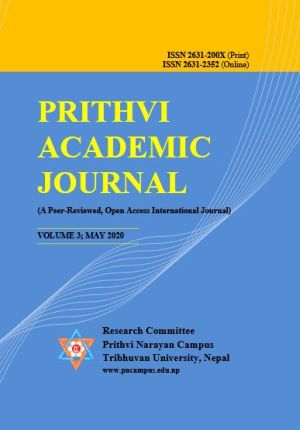Reinventing the Self: Cultural Negotiation of LuLing in Amy Tan’s The Bonesetter’s Daughter
DOI:
https://doi.org/10.3126/paj.v3i0.29561Keywords:
Becoming, being, cultural identity, cultural negotitation, self exploration, third spaceAbstract
In Amy Tan’s The Bonesetter’s Daughter, Chinese American mother LuLing involves in the self-exploration vacillating between her home and host cultures. The Chinese immigrant LuLing cannot remain totally independent of her indigenous culture of her native country China. Consequently, she demonstrates residual of Chinese culture in her diasporic life. Moreover, she forces her American born daughter to follow the same which sometimes renders conflict in mother-daughter relation. However, she cannot resist the influences of the culture of host country in the United States. She follows certain practices of American cultures. At the same time, she manifests an ambivalent attitude to both cultures. In such cultural interaction, her subjectivity encompasses multiplicities and pluralities by deconstructing the binary of the home and host culture. In this article, the formation of her subjectivity is analyzed through the critical postulations of ‘being’ and ‘becoming’ of Stuart Hall and ‘third space’ of Homi Bhabha. Hall’s representation in Bhabha’s third space can be interpreted and analyzed in the light of Arjun Appadurai’s modernity of cultural globalization. Precisely, the cultural interaction in the third space of the diaspora renders fluid and unstable subjectivity of LuLing which simultaneously belongs to past, present and future.




